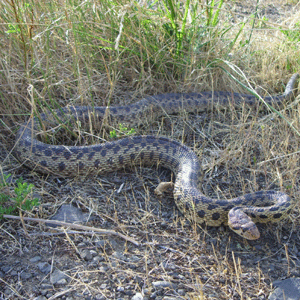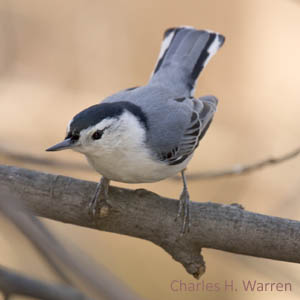Conservation of wildlife, from butterflies to birds, is a key goal of oak and prairie habitat restoration. However, we often don’t know how wildlife respond to our restoration efforts. The Oregon Wildlife Institute synthesized information on wildlife associations in these habitat types of the Willamette Valley. We first identified vertebrate species that are strongly associated with grasslands and oak woodlands, then highlighted their ecology and approaches to their conservation. From our synthesis of existing literature, we examine the limitations of research and monitoring approaches, and suggest alternative directions for future efforts.
Download the BLM Landowner’s Guide to Restoring & Managing Oregon White Oak Habitats by Dave Vesely & Gabe Tucker [10.7 Mb pdf]
Wildlife of Grasslands and Oak Woodlands
The Willamette Valley continues to support a rich diversity of mammals, birds, reptiles, amphibians, and invertebrates. Of the 750 wildlife species occurring in the Pacific Northwest, approximately 250 vertebrates use Willamette Valley grassland or woodland habitats.
 Nevertheless, there is cause for concern about the future for many species closely associated with native prairies, savannas, and Oregon white-oak woodlands. The large carnivores such as the gray wolf and grizzly bear disappeared from the Valley soon after European settlement. Other species that were once common such as Lewis’ woodpecker, streaked horned lark, and black-tailed jackrabbit are now very rare. Twenty wildlife species that occur in Willamette Valley grasslands or oak communities are listed as USDA/USDI Interagency special status/sensitive species, species of concern by the U.S. Fish and Wildlife Service and/or are Oregon Conservation Strategy species. Two species are listed as endangered (Fender’s blue butterfly) or threatened (Columbia white-tailed deer) under the federal Endangered Species Act.
Nevertheless, there is cause for concern about the future for many species closely associated with native prairies, savannas, and Oregon white-oak woodlands. The large carnivores such as the gray wolf and grizzly bear disappeared from the Valley soon after European settlement. Other species that were once common such as Lewis’ woodpecker, streaked horned lark, and black-tailed jackrabbit are now very rare. Twenty wildlife species that occur in Willamette Valley grasslands or oak communities are listed as USDA/USDI Interagency special status/sensitive species, species of concern by the U.S. Fish and Wildlife Service and/or are Oregon Conservation Strategy species. Two species are listed as endangered (Fender’s blue butterfly) or threatened (Columbia white-tailed deer) under the federal Endangered Species Act.
Historical records indicate that at least 24 butterfly species were associated with upland prairies in the Willamette Valley , of which 13 species are extinct or exist only as isolated populations
![Download report [657 Kb pdf]](http://www.oregonwildlife.org/wp-content/uploads/2012/07/synthesis_cover_sm.jpg) Our synthesis report describes the native wildlife communities that depend upon prairie and oak habitats for feeding and reproduction, we identify the species at greatest risk, and discuss the factors causing wildlife declines in the Valley
Our synthesis report describes the native wildlife communities that depend upon prairie and oak habitats for feeding and reproduction, we identify the species at greatest risk, and discuss the factors causing wildlife declines in the Valley
Project sponsored by: BLM/USFS Interagency Special Status/Sensitive Species Program
